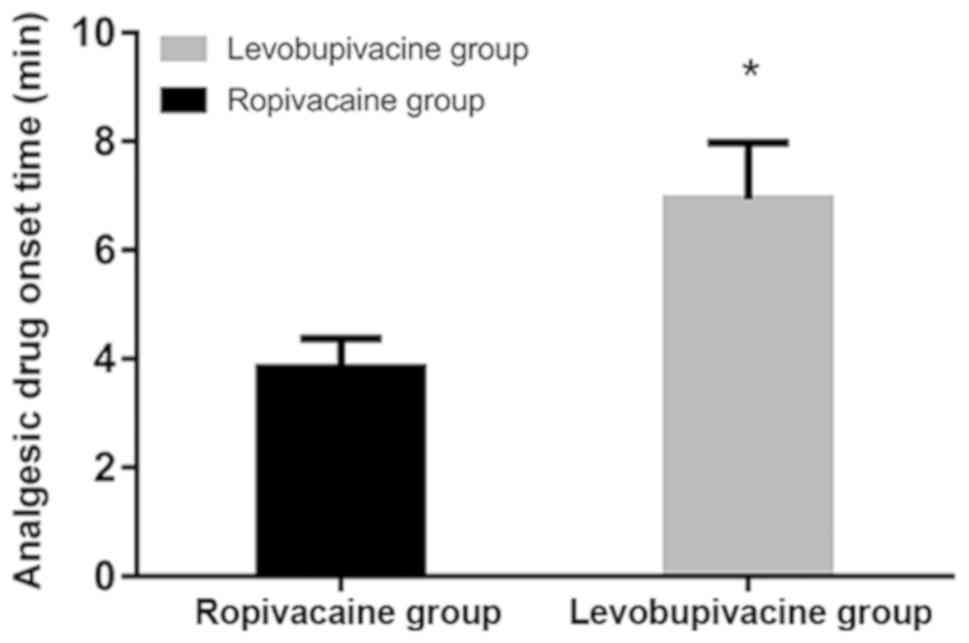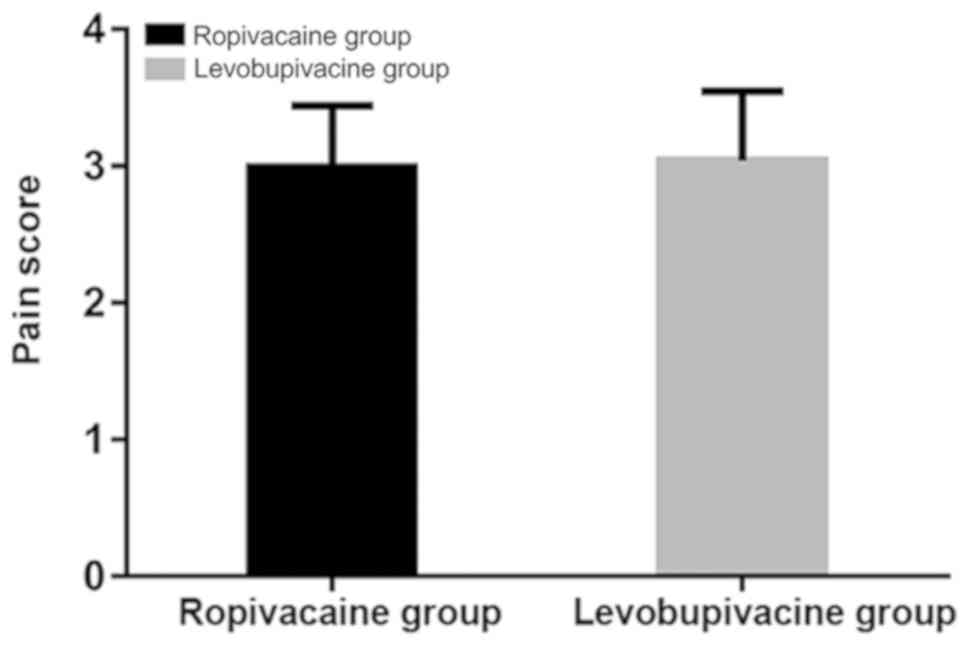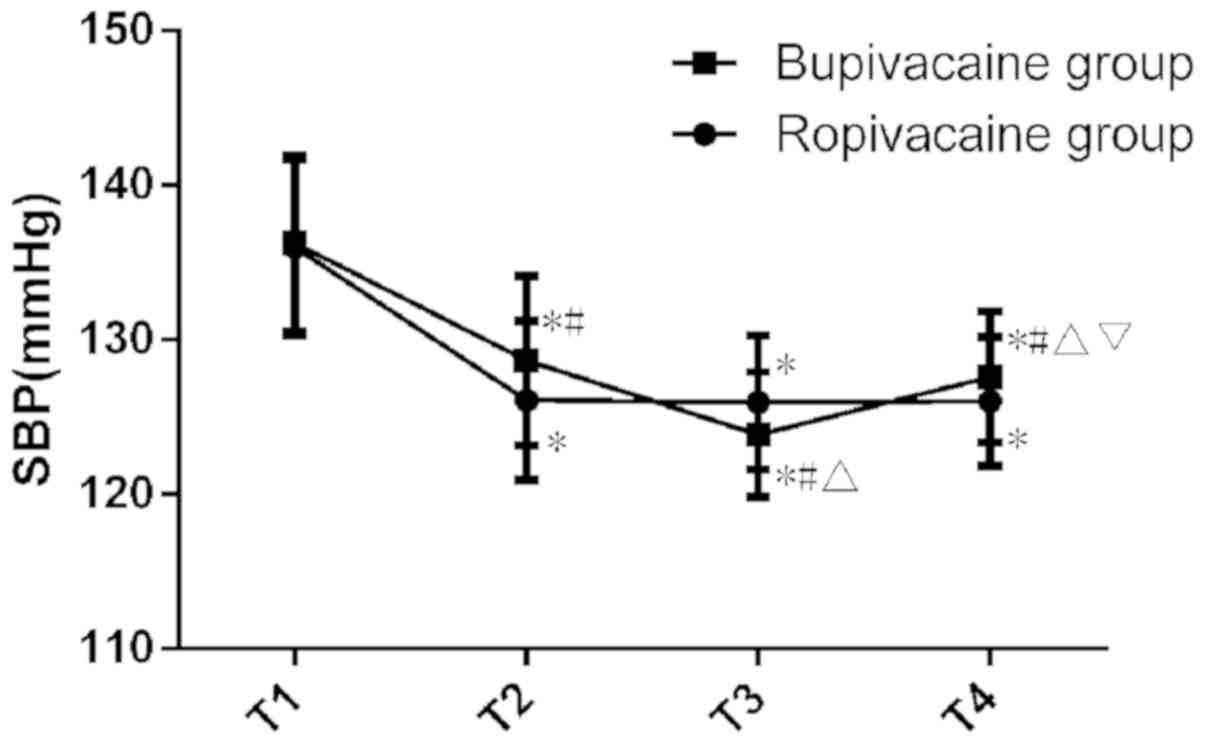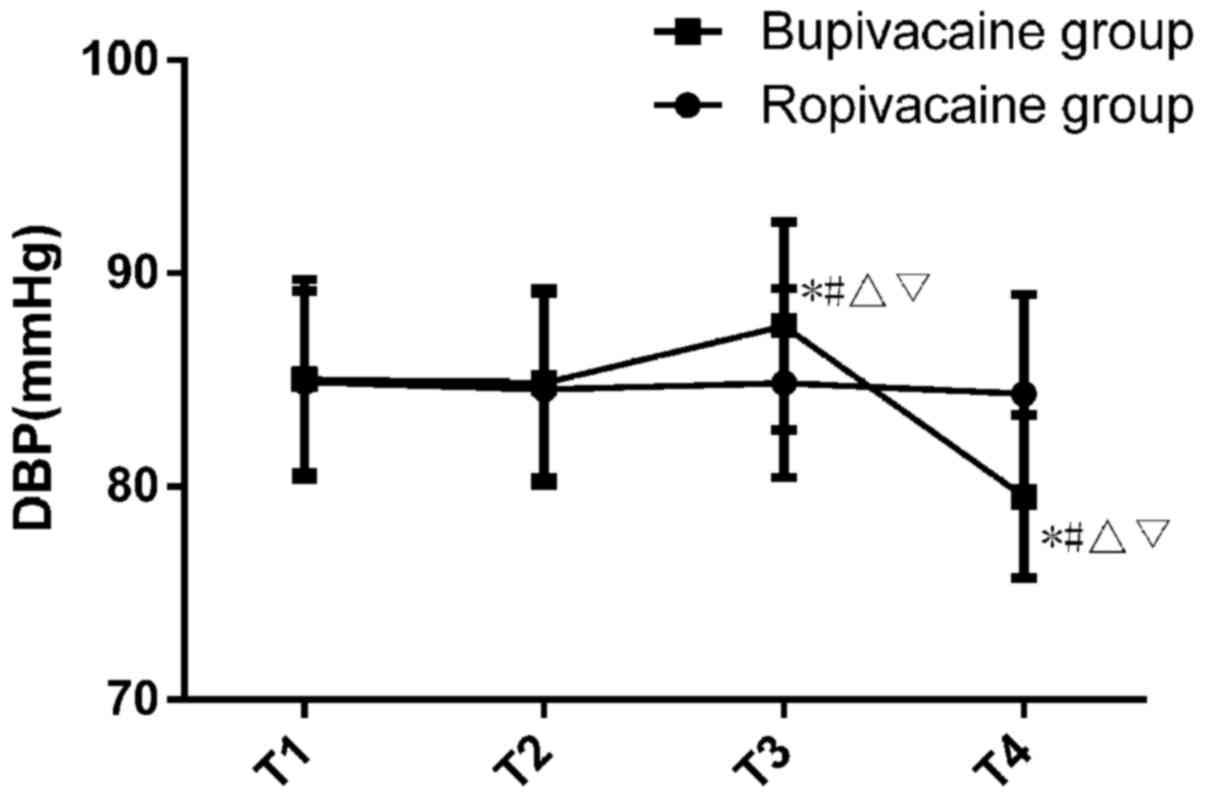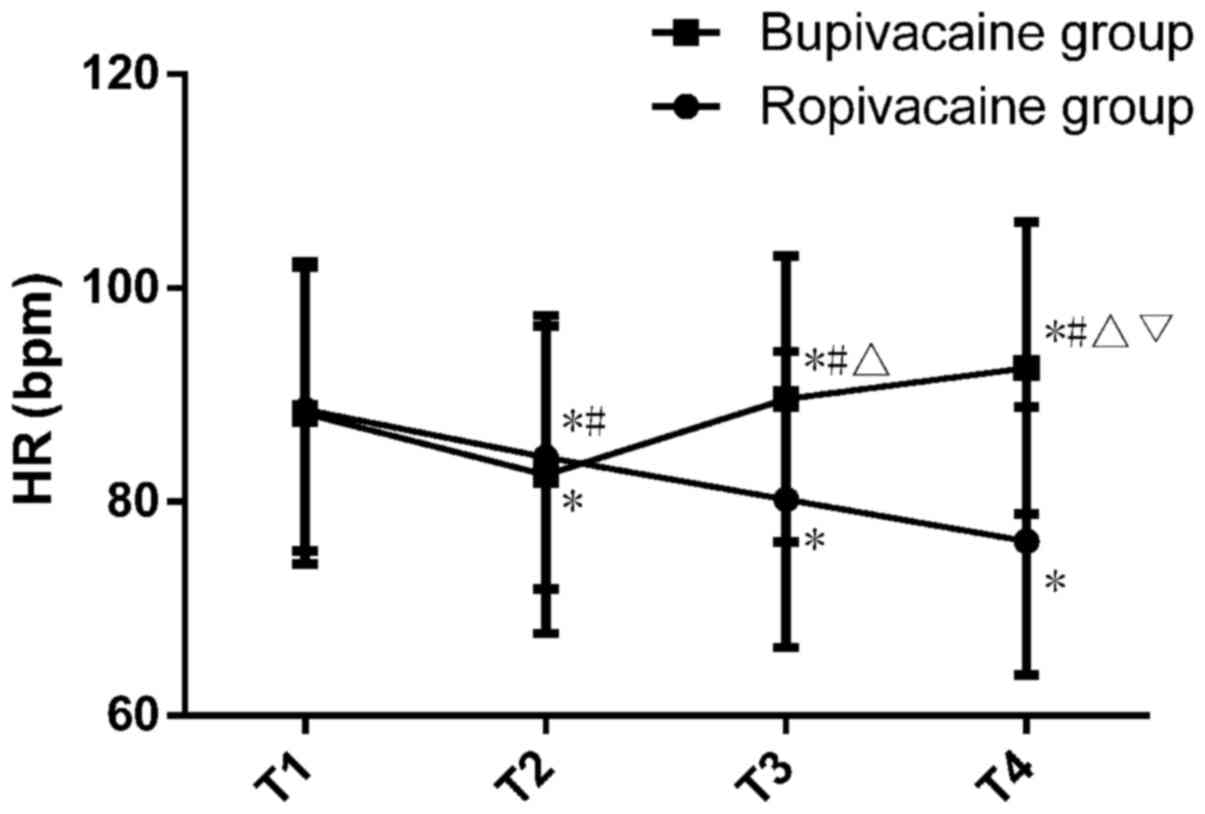|
1
|
Kosinova M, Stourac P, Adamus M, Seidlova
D, Pavlik T, Janku P, Krikava I, Mrozek Z, Prochazka M, Klucka J,
et al: Rocuronium versus suxamethonium for rapid sequence induction
of general anaesthesia for caesarean section: Influence on neonatal
outcomes. Int J Obstet Anesth. 32:4–10. 2017. View Article : Google Scholar : PubMed/NCBI
|
|
2
|
Finnerup NB, Haroutounian S, Kamerman P,
Baron R, Bennett DL, Bouhassira D, Cruccu G, Freeman R, Hansson P,
Nurmikko T, et al: Neuropathic pain: An updated grading system for
research and clinical practice. Pain. 157:1599–1606. 2016.
View Article : Google Scholar : PubMed/NCBI
|
|
3
|
Sevelsted A, Stokholm J, Bønnelykke K and
Bisgaard H: Cesarean section and chronic immune disorders.
Pediatrics. 135:e92–e98. 2015. View Article : Google Scholar : PubMed/NCBI
|
|
4
|
Mueller NT, Whyatt R, Hoepner L, Oberfield
S, Dominguez-Bello MG, Widen E, Hassoun A, Perera F and Rundle A:
Prenatal exposure to antibiotics, cesarean section and risk of
childhood obesity. Int J Obes (Lond). 39:665–670. 2015. View Article : Google Scholar : PubMed/NCBI
|
|
5
|
Huang L, Chen Q, Zhao Y, Wang W, Fang F
and Bao Y: Is elective cesarean section associated with a higher
risk of asthma? A meta-analysis. J Asthma. 52:16–25. 2015.
View Article : Google Scholar : PubMed/NCBI
|
|
6
|
Mylonas I and Friese K: Indications for
and risks of elective cesarean section. Dtsch Arztebl Int.
112:489–495. 2015.PubMed/NCBI
|
|
7
|
McDonnell NJ, Paech MJ, Muchatuta NA,
Hillyard S and Nathan EA: A randomised double-blind trial of
phenylephrine and metaraminol infusions for prevention of
hypotension during spinal and combined spinal-epidural anaesthesia
for elective caesarean section. Anaesthesia. 72:609–617. 2017.
View Article : Google Scholar : PubMed/NCBI
|
|
8
|
Kristensen K and Henriksen L: Cesarean
section and disease associated with immune function. J Allergy Clin
Immunol. 137:587–590. 2016. View Article : Google Scholar : PubMed/NCBI
|
|
9
|
Ngan Kee WD, Lee SW, Ng FF, Tan PE and
Khaw KS: Randomized double-blinded comparison of norepinephrine and
phenylephrine for maintenance of blood pressure during spinal
anesthesia for cesarean delivery. Anesthesiology. 122:736–745.
2015. View Article : Google Scholar : PubMed/NCBI
|
|
10
|
Puri GD, Mathew PJ, Biswas I, Dutta A,
Sood J, Gombar S, Palta S, Tsering M, Gautam PL, Jayant A, et al: A
multicenter evaluation of a closed-loop anesthesia delivery system:
A randomized controlled trial. Anesth Analg. 122:106–114. 2016.
View Article : Google Scholar : PubMed/NCBI
|
|
11
|
Li C, Li Y, Wang K and Kong X: Comparative
evaluation of remifentanil and dexmedetomidine in general
anesthesia for cesarean delivery. Med Sci Monit. 21:3806–3813.
2015. View Article : Google Scholar : PubMed/NCBI
|
|
12
|
Murouchi T, Iwasaki S and Yamakage M:
Quadratus lumborum block: Analgesic effects and chronological
ropivacaine concentrations after laparoscopic surgery. Reg Anesth
Pain Med. 41:146–150. 2016. View Article : Google Scholar : PubMed/NCBI
|
|
13
|
Kathuria S, Gupta S and Dhawan I:
Dexmedetomidine as an adjuvant to ropivacaine in supraclavicular
brachial plexus block. Saudi J Anaesth. 9:148–154. 2015. View Article : Google Scholar : PubMed/NCBI
|
|
14
|
National Collaborating Centre for Women's
and Children's Health (UK), . Intrapartum care: Care of healthy
women and their babies during childbirth. London. (RCOG Press).
2007.
|
|
15
|
Tashjian RZ, Hung M, Keener JD, Bowen RC,
McAllister J, Chen W, Ebersole G, Granger EK and Chamberlain AM:
Determining the minimal clinically important difference for the
American Shoulder and Elbow Surgeons score, simple shoulder test,
and visual analog scale (VAS) measuring pain after shoulder
arthroplasty. J Shoulder Elbow Surg. 26:144–148. 2017. View Article : Google Scholar : PubMed/NCBI
|
|
16
|
Dong C, Hu L, Liang F and Zhang S: Effects
of electro-acupuncture on labor pain management. Arch Gynecol
Obstet. 291:531–536. 2015. View Article : Google Scholar : PubMed/NCBI
|
|
17
|
Makvandi S, Latifnejad Roudsari R, Sadeghi
R and Karimi L: Effect of birth ball on labor pain relief: A
systematic review and meta-analysis. J Obstet Gynaecol Res.
41:1679–1686. 2015. View Article : Google Scholar : PubMed/NCBI
|
|
18
|
Li Y, Hu C, Fan Y, Wang H and Xu H:
Epidural analgesia with amide local anesthetics, bupivacaine, and
ropivacaine in combination with fentanyl for labor pain relief: A
meta-analysis. Med Sci Monit. 21:921–928. 2015. View Article : Google Scholar : PubMed/NCBI
|
|
19
|
Stourac P, Adamus M, Seidlova D, Pavlik T,
Janku P, Krikava I, Mrozek Z, Prochazka M, Klucka J, Stoudek R, et
al: Low-dose or high-dose rocuronium reversed with neostigmine or
sugammadex for cesarean delivery anesthesia: A randomized
controlled noninferiority trial of time to tracheal intubation and
extubation. Anesth Analg. 122:1536–1545. 2016. View Article : Google Scholar : PubMed/NCBI
|
|
20
|
Ripollés Melchor J, Espinosa Á, Martínez
Hurtado E, Casans Francés R, Navarro Pérez R, Abad Gurumeta A and
Calvo Vecino JM: Colloids versus crystalloids in the prevention of
hypotension induced by spinal anesthesia in elective cesarean
section. A systematic review and meta-analysis. Minerva Anestesiol.
81:1019–1030. 2015.PubMed/NCBI
|
|
21
|
Visser GH: Women are designed to deliver
vaginally and not by cesarean section: An obstetrician's view.
Neonatology. 107:8–13. 2015. View Article : Google Scholar : PubMed/NCBI
|
|
22
|
Happel-Parkins A and Azim KA: At pains to
consent: A narrative inquiry into women's attempts of natural
childbirth. Women Birth. 29:310–320. 2016. View Article : Google Scholar : PubMed/NCBI
|
|
23
|
Sawhney M, Mehdian H, Kashin B, Ip G, Bent
M, Choy J, McPherson M and Bowry R: Pain after unilateral total
knee arthroplasty: A prospective randomized controlled trial
examining the analgesic effectiveness of a combined adductor canal
peripheral nerve block with periarticular infiltration versus
adductor canal nerve block alone versus periarticular infiltration
alone. Anesth Analg. 122:2040–2046. 2016. View Article : Google Scholar : PubMed/NCBI
|
|
24
|
Wang LZ, Liu X, Zhang YF, Hu XX and Zhang
XM: Addition of fentanyl to the ultrasound-guided transversus
abdominis plane block does not improve analgesia following cesarean
delivery. Exp Ther Med. 11:1441–1446. 2016. View Article : Google Scholar : PubMed/NCBI
|
|
25
|
Jadon A, Dixit S, Kedia SK, Chakraborty S,
Agrawal A and Sinha N: Interscalene brachial plexus block for
shoulder arthroscopic surgery: Prospective randomised controlled
study of effects of 0.5% ropivacaine and 0.5% ropivacaine with
dexamethasone. Indian J Anaesth. 59:171–776. 2015. View Article : Google Scholar : PubMed/NCBI
|
|
26
|
Song J, Li L, Yu P, Gao T and Liu K:
Preemptive scalp infiltration with 0.5% ropivacaine and 1%
lidocaine reduces postoperative pain after craniotomy. Acta
Neurochir (Wien). 157:993–998. 2015. View Article : Google Scholar : PubMed/NCBI
|
|
27
|
Xiao F, Xu WP, Zhang YF, Liu L, Liu X and
Wang LZ: The dose-response of intrathecal ropivacaine
co-administered with sufentanil for cesarean delivery under
combined spinal-epidural anesthesia in patients with scarred
uterus. Chin Med J (Engl). 128:2577–2582. 2015. View Article : Google Scholar : PubMed/NCBI
|















